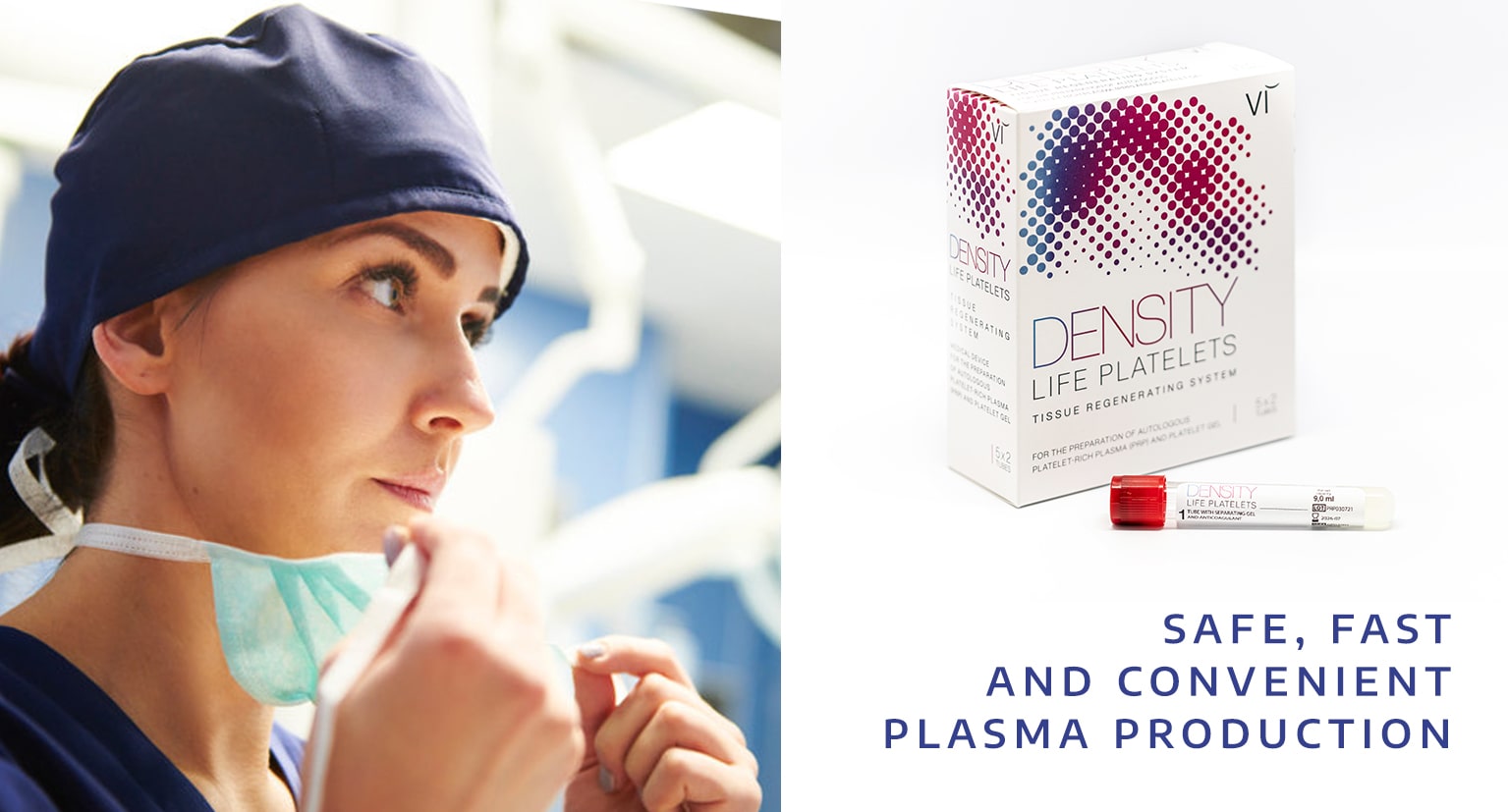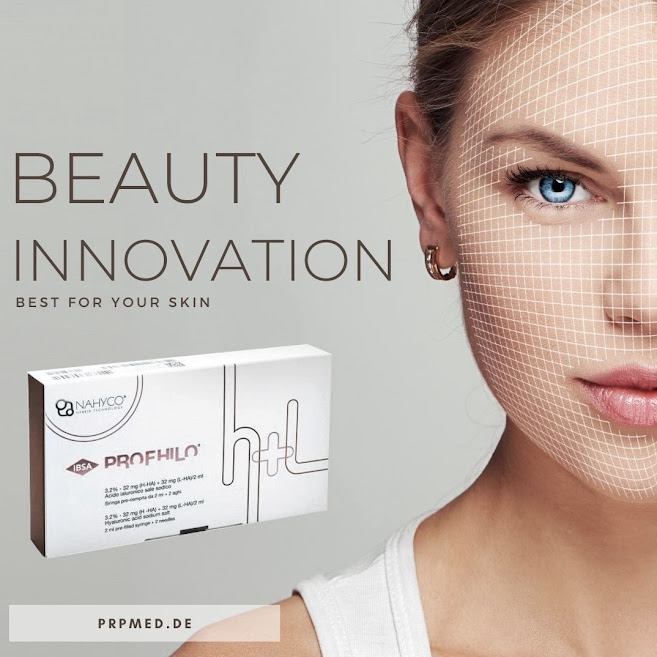PRP therapy: everything about the procedure
PRP-therapy is a relatively young direction in the treatment of joint diseases, based on the regenerative properties of platelet-rich blood plasma. This method of treatment does not cause allergies, does not affect liver and kidney function. Read more about what PRP therapy is, in which cases it is recommended by doctors and what to expect from the procedure, in our review.
What is PRP therapy and how does it work?
The name of the method ( platelet-rich plasma ) is translated from English as “ platelet-rich plasma ” . Platelets are special blood cells, their main function is to protect the body from blood loss. Under the influence of substances that enter the blood from the cells of the vascular wall destroyed during trauma, platelets settle on the affected area and, together with a special protein - fibrin, form a thrombus. After the affected area of the vessel is blocked, platelets begin to secrete many biologically active substances that contribute to the restoration of the damaged area. Among these substances there are regulators of fibroblast activity - special cells that synthesize collagen and elastin, proteins on which the elasticity of the skin, the strength of the ligaments, and the condition of the articular cartilage depend.
PRP therapy is based on the ability of platelets to regulate regeneration (regenerative processes). The first scientific works in this direction appeared in the 70s of the XX century [1] , but the methodology began to be developed especially actively at the beginning of this century. Now it is used in traumatology and orthopedics, dentistry, restorative medicine, cosmetology.
Platelet-rich plasma is obtained from the patient's own blood. Different types of blood cells have different weights. So, if you subject the taken blood to centrifugation, the cells will settle in a test tube in clear layers: at the bottom there will be heavier erythrocytes and leukocytes, at the top - platelets and plasma. After the upper layer is separated from the main mass, and, in fact, platelet-rich plasma is obtained. If the initial material - in the blood - contains 180-320 × 10 9 / L of platelets, then after enrichment in the above-mentioned way, they become 1000–2500 × 10 9 / L, that is, approximately five to eight times more.
Cartilage tissue itself has very limited potential for repair. But, getting into the joint, platelets from the enriched blood plasma secrete those very special biologically active substances - growth factors that act directly on the fibroblasts of the cartilage tissue:
- insulin-like growth factor (IGF-1) - stimulates cell growth, differentiation, cell migration;
- platelet growth factor (PDGF) - plays an important role in the process of cell regeneration and survival;
- transforming growth factor (TGF-β) - reduces inflammation, stimulates collagen synthesis, suppresses apoptosis (natural cell death);
- vascular endothelial growth factor (VEGF) - reduces the permeability of the vascular walls, improves blood supply to tissues;
- epidermal growth factor (EGF) - starts the process of cell renewal, division;
- fibroblast growth factor (FGF) - stimulates the growth of blood vessels, increases the number of fibroblasts.
All these factors not only contribute to the restoration of cartilage tissue, but also reduce the activity of inflammation and reduce pain syndrome - the main complaint of patients with joint pathology.
Indications and contraindications for PRP therapy
PRP therapy, like any treatment, has its limitations and purpose. By indications include:
- recovery from sprains and tears of ligaments or muscles;
- chronic sports injuries;
- arthritis, arthrosis (inflammatory and degenerative changes in the joints);
- tendovaginitis;
- heel spur;
- other chronic pathologies of the musculoskeletal system.
PRP of joints: all about the procedure
Contraindications to PRP therapy can be relative and absolute. Relative contraindications are temporary conditions in which the procedure cannot be performed. These include:
- any acute infection - viral or bacterial;
- high fever (above 38 ° C);
- the use of drugs that change blood clotting (acetylsalicylic acid, warfarin, and others).
- After these factors are eliminated, PRP therapy can be carried out.
Absolute contraindications are chronic, that is, irreparable, conditions in which the procedure is categorically contraindicated:
- any tumors, both benign and malignant;
- autoimmune diseases (SLE, rheumatoid arthritis, and so on);
- anemia (hemoglobin <90 g / l);
- thrombocytopenia and thrombocytopathy;
- intolerance to sodium citrate (it is added to the blood so that it does not coagulate in a test tube);
- immunodeficiency;
- sepsis.
- In all these conditions, the potential harm from manipulation outweighs the benefit.
Preparation for the procedure and its implementation
For PRP therapy to be effective, you need to prepare your body. Smoking, alcohol abuse, a diet poor in vitamins (fast food and convenience foods) degrade the quality of the enriched plasma obtained, therefore:
- two weeks before the procedure, you need to stop drinking drugs that affect blood clotting (NSAIDs and others);
- it is necessary to exclude alcohol for the same period;
- you should stop smoking at least a day (or better - also in two weeks);
- it is worth adding black bread, whole grains, by-products (sources of B vitamins), sauerkraut, black currants, rose hips (vitamin C) or a multivitamin complex to the diet.
- In addition, it is advisable to lead a measured life, get enough sleep and avoid stress.
The PRP therapy procedure itself consists of several stages:
- The doctor takes 10–20 ml of blood and places it in a special prp tube.
- The blood is processed in a centrifuge.
- The resulting several milliliters of enriched plasma is transferred into a syringe with an intra-articular injection needle.
Plasma is injected into the joint cavity.
After the injection, the patient flexes and unbends the limb several times so that the injected plasma is evenly distributed in the articular cavity and turns into a gel.
Platelet-Rich Plasma: Essentials for PRP Therapy
Immediately after the manipulation, the pain may intensify, but it disappears within a few days. As a rule, the therapeutic effect lasts 6-12 months.
Benefits of PRP Therapy for Joint Diseases
After the course of PRP-therapy:
- improves blood circulation in the area of the affected joint;
- the spasm of the muscles surrounding the joint will decrease, therefore, the pain decreases and the range of motion expands;
- cartilage restoration is accelerated;
- the composition of the joint fluid is normalized.
All this speeds up rehabilitation after an acute injury or improves the quality of life in case of chronic joint inflammation.
PRP therapy does not cause allergic reactions, since it involves the use of only the patient's own cells. For the same reason, with such a procedure, there is no risk of bringing any infection along with the blood. The injected substance does not affect the liver, kidneys and other internal organs, so the risk of complications after PRP therapy is minimal.
In simple cases, a single enriched plasma injection procedure is sufficient. But more often doctors recommend a course of three to five procedures, depending on the severity and duration of the pathological process.
PRP-therapy is a modern and well-proven method of joint treatment. But it must be remembered that there is no panacea in medicine, therefore, with long-term chronic inflammation, one can count on relieving the condition and stabilizing the process, but not on complete recovery.


Kommentare
Kommentar veröffentlichen